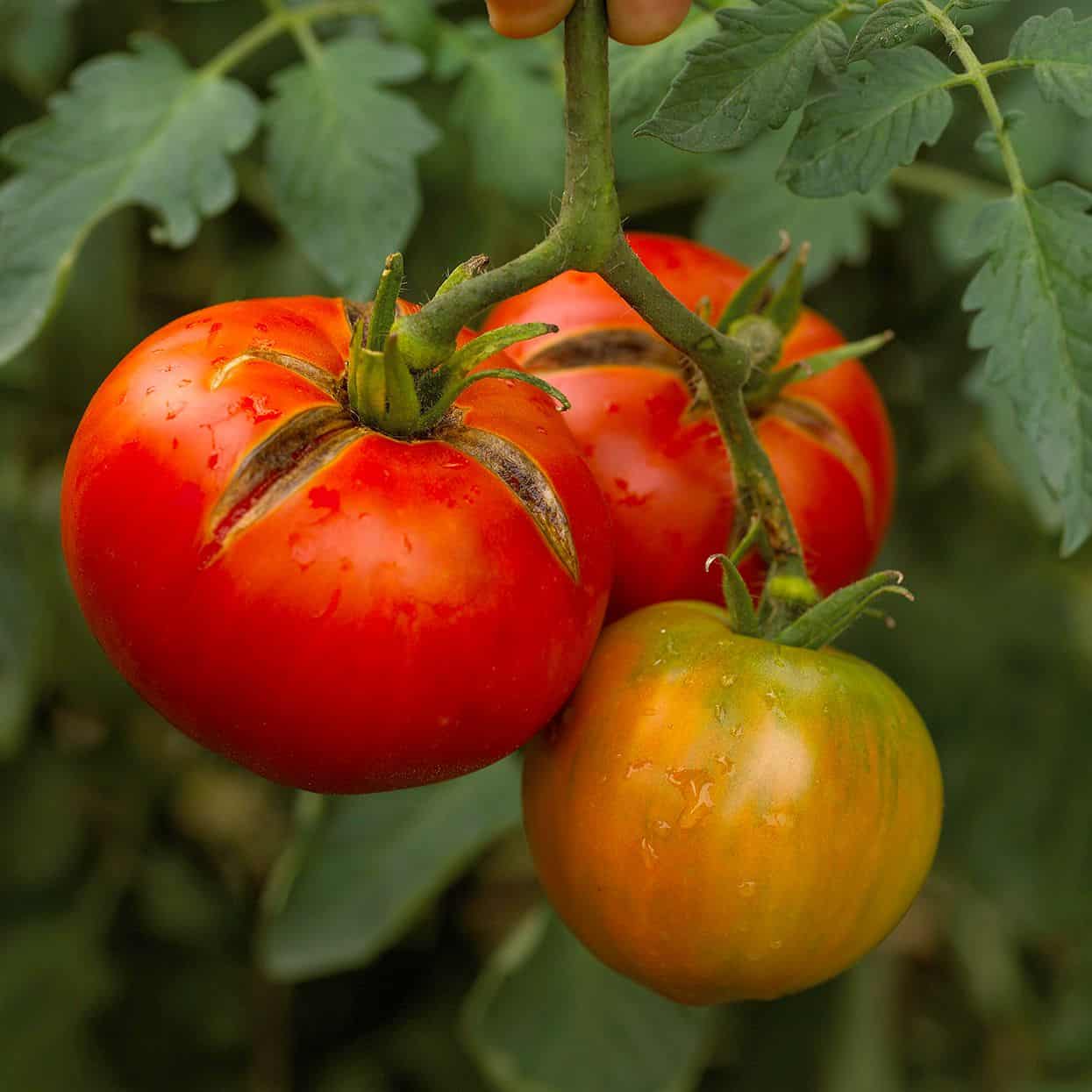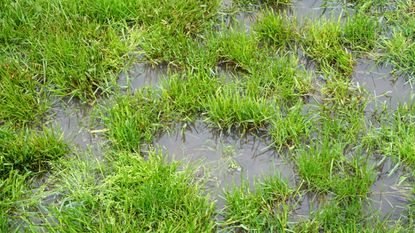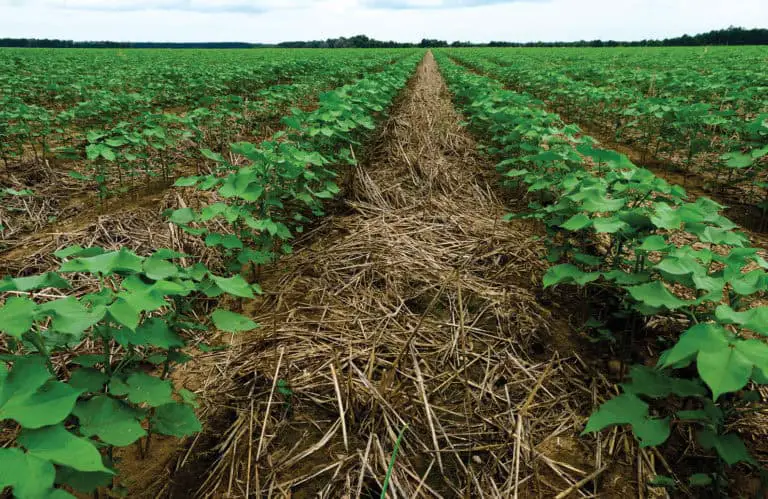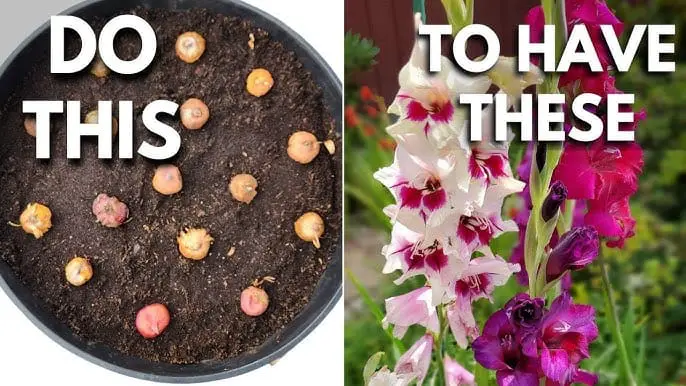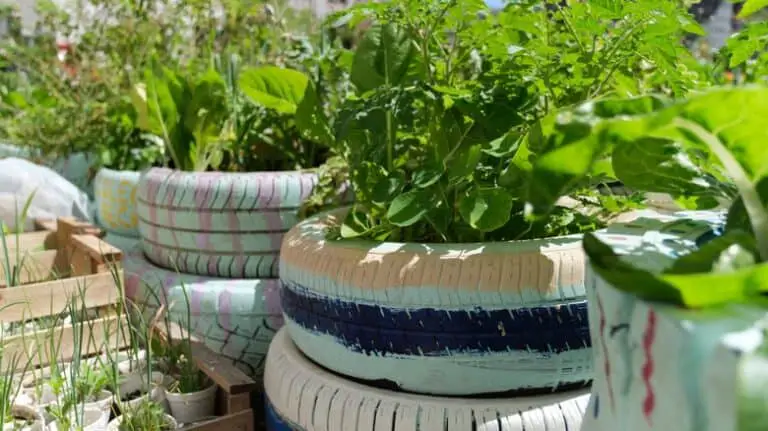Spot Blossom End Rot Before It Ruins Your Juicy Tomatoes: Essential Tips
Spot blossom end rot by looking for dark, sunken spots on the bottom of your tomatoes. These spots indicate calcium deficiency.
Blossom end rot can devastate your tomato crop if not addressed early. This common issue stems from calcium deficiency, often exacerbated by inconsistent watering. Identifying the problem early is crucial to salvaging your harvest. Look for small, dark spots on the blossom end of your tomatoes; these spots will grow and sink into the fruit.
Proper watering and calcium-rich soil are vital for prevention. By maintaining consistent soil moisture and using calcium supplements, you can keep your tomatoes healthy and vibrant. Early detection and proactive care ensure your tomatoes remain juicy and delicious.
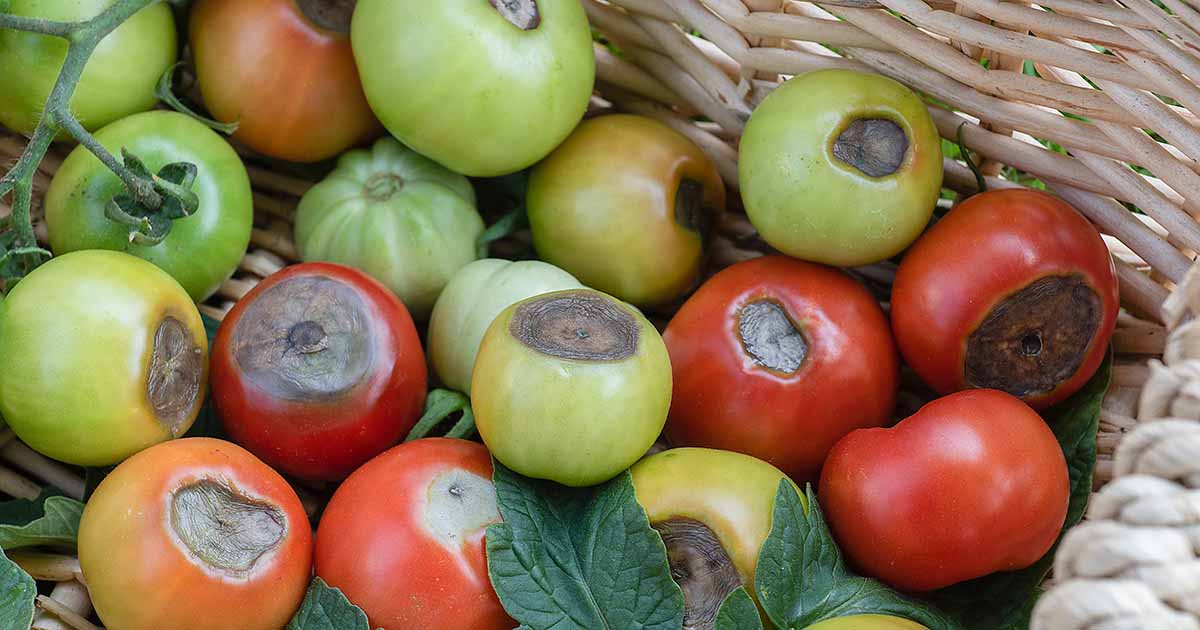
Credit: gardenerspath.com
What Is Blossom End Rot?
Blossom End Rot is a common problem for tomato gardeners. This disorder affects the fruit, leading to unsightly and inedible tomatoes. It occurs due to a calcium imbalance in the plant.
Calcium is vital for plant growth. When tomatoes don’t get enough calcium, they develop Blossom End Rot. This usually happens when the soil lacks calcium or the plant can’t absorb it properly.
Symptoms And Signs
Identifying Blossom End Rot early can save your tomatoes. Look for these signs:
- Dark, sunken spots at the bottom of the fruit
- Spots grow larger and become black and leathery
- Fruit may appear water-soaked and soft
- Affected areas can cover up to half the tomato
These symptoms usually appear when the fruit is green and young.
Affected Plants
Blossom End Rot doesn’t only affect tomatoes. Other plants can suffer too. Commonly affected plants include:
| Plant | Common Name |
|---|---|
| Solanum lycopersicum | Tomato |
| Capsicum annuum | Bell Pepper |
| Cucumis sativus | Cucumber |
| Cucurbita pepo | Squash |
These plants need calcium for healthy fruit development. Ensuring proper calcium levels can prevent Blossom End Rot.
:strip_icc()/blossom-end-rot-tomatoes-ec3c3057-1ebe1b33067b4138bdbba94615098a58.jpg)
Credit: www.bhg.com
Causes Of Blossom End Rot
Blossom End Rot can ruin your juicy tomatoes. Understanding the causes helps prevent this issue. Two main factors contribute to this problem: calcium deficiency and water stress.
Calcium Deficiency
Calcium deficiency is a primary cause of Blossom End Rot. Tomatoes need calcium for healthy growth. Without it, the fruit develops dark, sunken spots at the bottom.
Here are some reasons for calcium deficiency:
- Soil lacks calcium
- Improper soil pH
- Competing nutrients
Ensuring your soil has enough calcium is crucial. A soil test can help identify deficiencies. Adding lime or gypsum can improve calcium levels.
Water Stress
Water stress affects calcium uptake in plants. Inconsistent watering can lead to Blossom End Rot.
Here are some causes of water stress:
- Irregular watering schedule
- Drought conditions
- Overwatering
Maintaining consistent moisture levels is essential. Use a drip irrigation system to ensure even watering. Mulching can also help retain soil moisture.
By understanding these causes, you can take steps to prevent Blossom End Rot. Healthy tomatoes require proper care and attention.
Preventing Blossom End Rot
Blossom End Rot can spoil your juicy tomatoes. Follow these simple steps to prevent this issue. Proper soil preparation and consistent watering are key.
Soil Preparation
Healthy soil is crucial for preventing Blossom End Rot. Start by testing your soil’s pH. Tomatoes thrive in soil with a pH between 6.2 and 6.8.
To improve soil quality, add organic matter. Compost or well-rotted manure works best. These materials enrich the soil and improve drainage.
Ensure your soil has enough calcium. Blossom End Rot often occurs due to calcium deficiency. Add lime or gypsum to boost calcium levels.
| Material | Purpose |
|---|---|
| Compost | Enrich soil |
| Lime | Increase calcium |
| Gypsum | Boost calcium |
Consistent Watering
Consistent watering prevents Blossom End Rot. Tomato plants need regular moisture. Water the soil, not the leaves.
Water deeply and evenly. Avoid letting the soil dry out. Use mulch to retain moisture. Straw or wood chips work well.
- Water in the morning
- Use a soaker hose
- Avoid overhead watering
Inconsistent watering stresses the plants. Stress can lead to Blossom End Rot. Keep the soil moist but not soggy.
Follow these tips to prevent Blossom End Rot. Your tomatoes will stay juicy and delicious.
Improving Soil Health
Healthy soil is the foundation of thriving tomato plants. Poor soil health can cause blossom end rot, ruining your juicy tomatoes. Let’s learn how to improve soil health with two key steps: testing soil and adding compost.
Testing Soil
Testing your soil helps you understand its nutrient levels. A simple soil test kit can tell you the pH and nutrient levels.
Steps to Test Soil:
- Buy a soil test kit from a garden store.
- Collect soil samples from different garden spots.
- Follow the kit’s instructions to test the samples.
- Record the results and understand your soil’s needs.
If your soil lacks calcium, your tomatoes might suffer from blossom end rot. Knowing this helps you take the right steps to fix it.
Adding Compost
Adding compost enriches the soil with organic matter. It improves soil structure, water retention, and nutrient content.
Benefits of Compost:
- Provides essential nutrients to plants.
- Improves soil aeration and drainage.
- Helps maintain soil pH balance.
To add compost, spread a layer on top of your soil. Mix it well into the top few inches. This helps create a rich environment for your tomato plants.
Compost Application Table:
| Compost Type | Application Rate | Benefits |
|---|---|---|
| Homemade Compost | 2-3 inches | Rich in diverse nutrients |
| Store-bought Compost | 1-2 inches | Convenient and consistent quality |
| Leaf Mold | 1-2 inches | Excellent for soil structure |
By improving soil health, you can prevent blossom end rot. Healthy soil means healthy, juicy tomatoes.
Choosing The Right Tomato Varieties
Choosing the right tomato varieties is crucial for preventing blossom end rot. Different varieties have different resistances to diseases. Selecting the appropriate type can make a big difference in your harvest. Here’s a guide to help you choose the best tomato varieties for a healthy, juicy crop.
Disease-resistant Varieties
Some tomato varieties are bred to resist common diseases. These types are less likely to suffer from blossom end rot. Here are some excellent disease-resistant options:
- Celebrity: Known for its resistance to many diseases.
- Roma: A popular choice for its disease resistance.
- Better Boy: Offers high disease resistance and great flavor.
Choosing disease-resistant varieties can save you time and trouble. They often need less care and give better yields.
Heirloom Vs Hybrid
Choosing between heirloom and hybrid tomatoes is important. Both types have their benefits and drawbacks. Here’s a comparison:
| Type | Advantages | Disadvantages |
|---|---|---|
| Heirloom |
|
|
| Hybrid |
|
|
Heirloom tomatoes have rich flavors but are less resistant. Hybrid tomatoes are more robust but may lack taste. Consider your needs before deciding.
Proper Watering Techniques
Spotting Blossom End Rot early can save your juicy tomatoes. One effective way to prevent this issue is by using proper watering techniques. Consistent and adequate watering helps maintain the calcium levels in your tomato plants, which is essential for their health. Let’s explore some effective methods.
Drip Irrigation
Using drip irrigation is a smart way to water tomato plants. This method delivers water directly to the root zone, ensuring the soil remains moist but not soggy. Drip irrigation reduces water waste and prevents soil erosion, making it an eco-friendly choice.
Benefits of Drip Irrigation:
- Consistent moisture levels
- Reduced water waste
- Prevention of soil erosion
- Minimized weed growth
Mulching Benefits
Mulching around tomato plants offers multiple benefits. It helps retain soil moisture, suppresses weeds, and regulates soil temperature. Organic mulches like straw, grass clippings, or shredded leaves work best.
Benefits of Mulching:
- Retains soil moisture
- Suppresses weeds
- Regulates soil temperature
- Improves soil health
By using these proper watering techniques, you can help your tomato plants thrive and prevent Blossom End Rot from ruining your harvest.
Fertilizing For Healthy Tomatoes
Keeping tomatoes healthy is essential for a great harvest. Fertilizing properly can prevent diseases like blossom end rot. Knowing the right fertilizers and methods is key.
Balanced Fertilizers
A balanced fertilizer is crucial for tomato plants. Look for a fertilizer with equal parts of nitrogen, phosphorus, and potassium (N-P-K). A common ratio is 10-10-10.
- Nitrogen helps with leafy growth.
- Phosphorus supports root development.
- Potassium boosts overall plant health.
Apply the fertilizer according to the package instructions. Over-fertilizing can harm your plants. Use a soil test kit to check nutrient levels. This helps ensure your tomatoes get what they need.
Foliar Sprays
Foliar sprays are another way to provide nutrients. These sprays are applied directly to the leaves. Foliar feeding can be more effective than soil fertilizing.
- Choose a spray with calcium to prevent blossom end rot.
- Spray in the early morning or late evening.
- Ensure even coverage on all leaves.
Foliar sprays can work quickly. They help when plants show nutrient deficiencies. Always follow the instructions on the spray bottle. Avoid spraying during hot, sunny days.
| Type of Fertilizer | Benefits | Application Tips |
|---|---|---|
| Balanced Fertilizer (10-10-10) | Supports overall plant health | Apply based on soil test |
| Calcium Foliar Spray | Prevents blossom end rot | Spray in cool times of day |
Proper fertilizing ensures your tomatoes grow strong and healthy. Follow these tips for a bountiful harvest.
Monitoring And Early Intervention
Spotting blossom end rot early can save your juicy tomatoes. Monitoring and early intervention are key to a healthy garden. Regular inspections and quick treatment can help prevent serious damage.
Regular Inspections
Regular inspections are vital for detecting blossom end rot early. Check your tomato plants at least once a week. Look for small, water-soaked spots on the blossom end of the fruit.
- Inspect the entire plant, not just the fruit.
- Check both the top and bottom of leaves.
- Examine stems and roots for any signs of distress.
Use a magnifying glass for a closer look. Early signs can be hard to see with the naked eye. Note any changes in color or texture. Early detection means easier treatment and healthier tomatoes.
Treating Affected Plants
Once you spot blossom end rot, act quickly. Remove affected fruits to stop the spread. This allows the plant to focus on healthy growth.
- Trim off any damaged parts of the plant.
- Ensure the soil is well-drained and rich in calcium.
- Water plants evenly. Inconsistent watering can worsen blossom end rot.
Avoid over-fertilizing, as this can lead to nutrient imbalances. Use a calcium supplement if needed. Calcium is crucial for preventing blossom end rot. You can find calcium sprays at garden centers. Apply as directed for best results.
Monitoring and early intervention keep your tomatoes healthy and juicy. Stay vigilant and act fast to enjoy a bountiful harvest.

Credit: oldworldgardenfarms.com
Frequently Asked Questions
What Causes Blossom End Rot In Tomatoes?
Blossom end rot is caused by calcium deficiency in the fruit, often due to irregular watering or soil imbalances.
How Can I Prevent Blossom End Rot?
Prevent blossom end rot by ensuring consistent watering, using mulch, and testing soil for adequate calcium levels.
Can I Save Tomatoes With Blossom End Rot?
You can’t save affected parts, but removing damaged fruit and improving care can prevent further issues.
Conclusion
Act quickly to spot blossom end rot and save your tomatoes. Regular checks and proper watering can prevent this issue. Use calcium-rich fertilizers and maintain consistent soil moisture. By taking these steps, you can ensure a healthy, bountiful tomato harvest.
Enjoy fresh, juicy tomatoes all season long!

